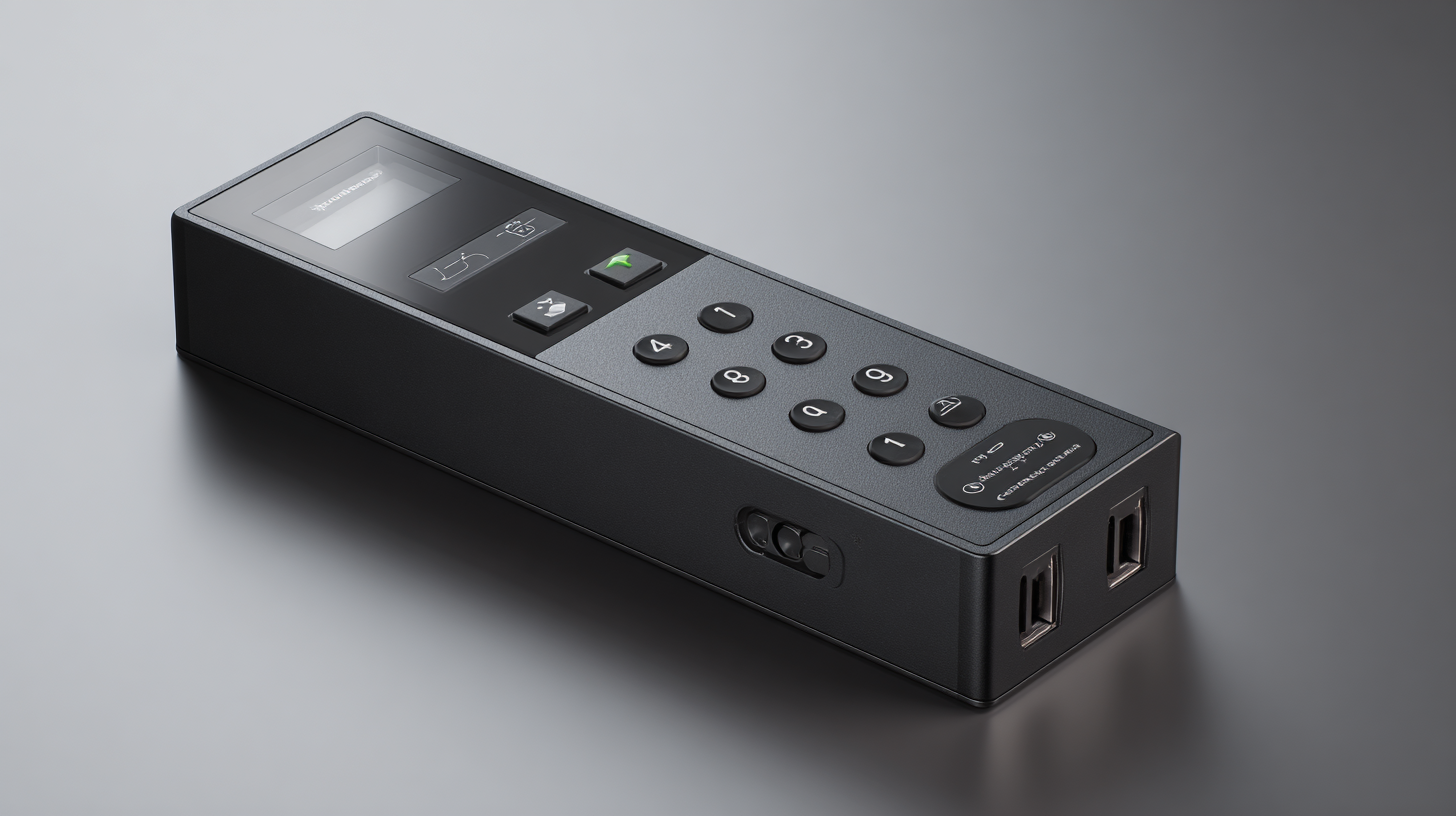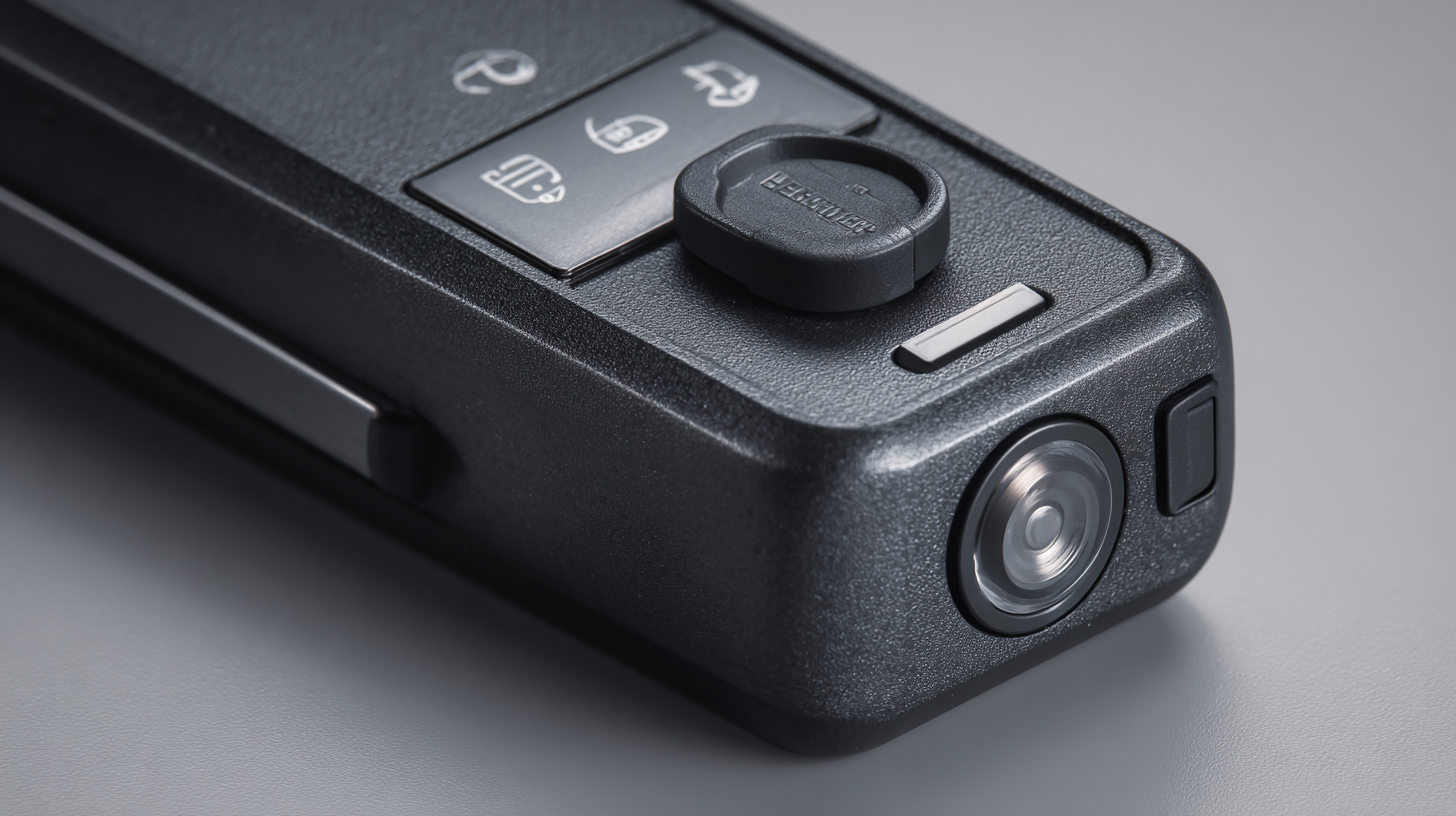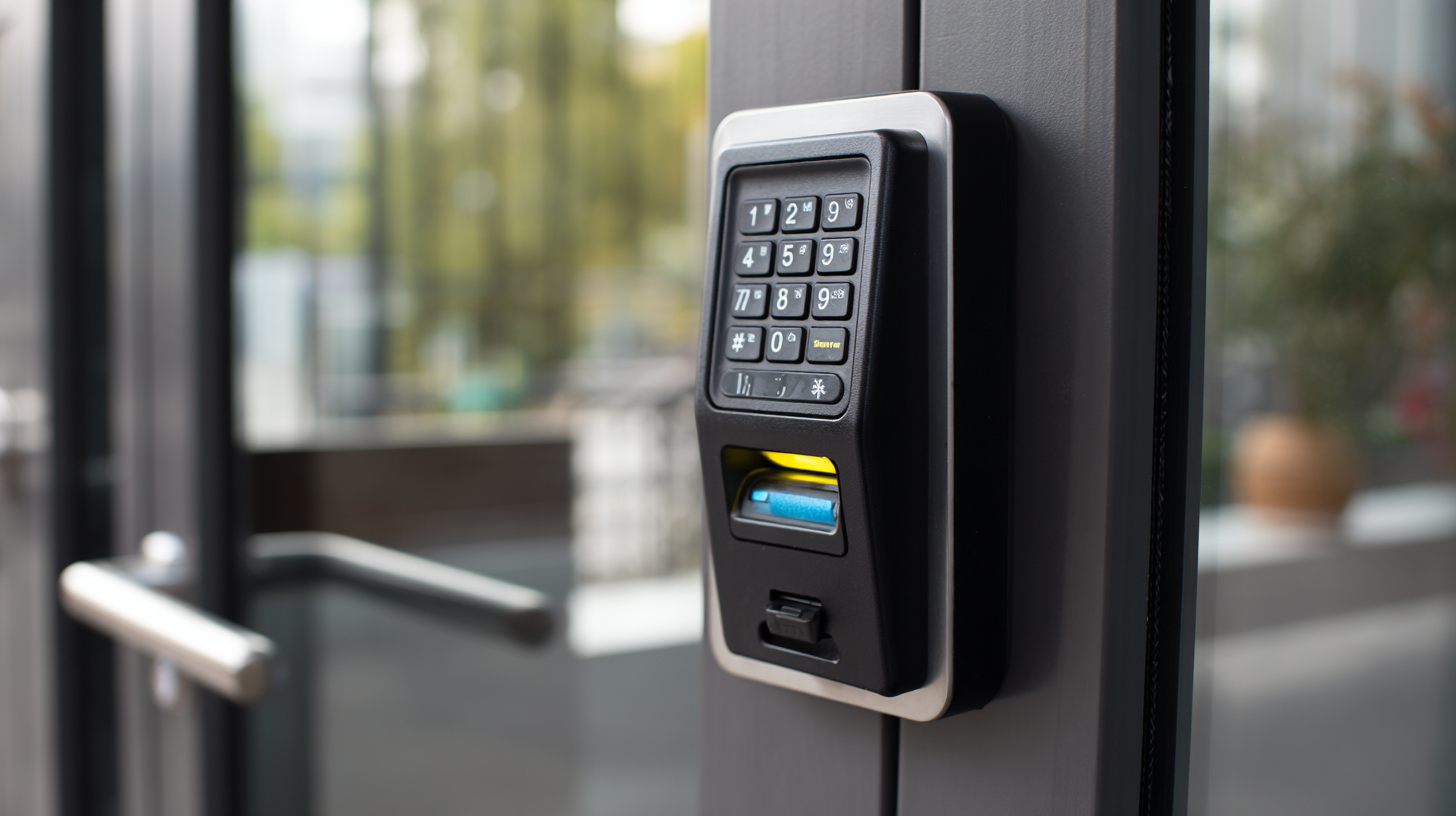Unlocking Precision: In-Depth Technical Specifications of the Best Access Control Card Reader
In an increasingly security-conscious world, Access Control Card Readers have emerged as pivotal devices for safeguarding physical spaces and sensitive information. According to a report by MarketsandMarkets, the access control market is projected to reach USD 14.82 billion by 2026, growing at a CAGR of 8.7% from 2021 to 2026. This growth underscores the critical role of innovative technologies in enhancing security measures.

As organizations seek to bolster their defenses against unauthorized access, understanding the in-depth technical specifications of the best Access Control Card Readers becomes essential. Features such as read range, compatibility with multiple card types, encryption methods, and integration capabilities are vital considerations that can significantly impact the effectiveness of these security systems. This blog will explore these specifications in detail, offering insights on how to select the right access control solution tailored to specific security needs.
Understanding Access Control Card Reader Alternatives
When considering access control systems, it's essential to explore alternatives to traditional card readers. Alongside RFID-based readers, biometric systems and mobile access solutions are gaining traction. Biometric readers, which utilize fingerprints or facial recognition, offer an added layer of security that many businesses find appealing. These systems can significantly reduce the risk of unauthorized access, as they require the unique biological traits of each user.
**Tip 1:** When choosing a biometric system, ensure it meets your specific security needs and is compliant with relevant regulations. This will help you avoid potential legal issues and optimize the system’s effectiveness.
Mobile access solutions are another viable alternative. By using smartphones as digital keys, organizations can streamline entry processes and reduce the need for physical cards, which can be lost or stolen. This method not only improves user convenience but also allows for easy updates to access permissions in real-time.
**Tip 2:** Consider investing in a mobile access app that integrates seamlessly with your existing security infrastructure to enhance usability and maintain control over access points.
Evaluating these alternatives will enable you to implement a more secure, efficient, and user-friendly access control system tailored to your operational needs.
Unlocking Precision: In-Depth Technical Specifications of the Best Access Control Card Reader - Understanding Access Control Card Reader Alternatives
| Feature | Specification | Alternative Options |
|---|---|---|
| Reading Technology | Magstripe, Proximity, Smart Card | Dual-Technology Readers, Biometric Readers |
| Connectivity Options | Wired (RS-232, Wiegand), Wireless (Wi-Fi, Bluetooth) | IP-enabled Readers, Cloud-based Access Solutions |
| Power Supply | DC 12V, PoE (Power over Ethernet) | Battery-operated Readers, Solar-powered Options |
| Operating Temperature | -20°C to 50°C (-4°F to 122°F) | Indoor-only Models, Weatherproof Readers |
| Mounting Options | Surface Mount, Flush Mount | Standalone Readers, Multi-Reader Systems |
| User Capacity | Up to 50,000 Users | Systems Supporting Millions of Users, Cloud-based User Management |
| Security Features | Encryption, Tamper Alerts | Biometric Verification, RFID Authentication |
| Price Range | $100 - $500 | Budget Options ($30 - $100), High-end Solutions ($500+) |
Key Features to Assess in Access Control Card Readers
When assessing access control card readers, several key features should be prioritized to ensure an effective security solution.
First, look for high compatibility with various card formats, including RFID, smart cards, and mobile credentials.
According to a recent report by MarketsandMarkets, the RFID technology market is expected to grow from $10.2 billion in 2021 to $16.2 billion by 2026, indicating a strong trend towards the use of RFID technologies in access control systems.
This implies that more organizations are adopting card readers that can efficiently read these formats.
Another critical feature is the reader's communication protocol. Ensure that the card reader supports secure communications, such as AES encryption, which is vital for protecting sensitive data exchanged during the authentication process.
A study by ResearchAndMarkets suggests that access control systems with advanced encryption can reduce the risk of data breaches by 40%, making it essential to select readers that enhance overall security.
Tip: When evaluating access control systems, consider models with customizable configurations that adapt to your security needs.
Also, ensure they offer regular firmware updates to protect against emerging threats.
This proactive approach not only enhances security but also ensures compliance with industry regulations.

Comparative Analysis of Different Types of Card Readers
When exploring the landscape of access control card readers, a comparative analysis reveals a variety of technologies tailored for specific applications. The key types include proximity readers, which operate via radio frequency identification (RFID) technology, and biometrics readers that offer advanced security by scanning fingerprints or facial features. According to industry reports, the global market for access control systems is projected to reach approximately $10 billion by 2025, reflecting a growing demand for secure identification methods.
Proximity card readers remain popular due to their cost-effectiveness and ease of use, allowing for quick entry without direct contact. However, biometric systems are gaining traction as they enhance security and reduce the risk of credential theft. Recent studies indicate that biometric systems can increase security effectiveness by up to 70% compared to traditional methods. As organizations increasingly seek reliable and secure solutions, balancing efficiency with advanced biometric features will be crucial in selecting the right access control card reader technology for their needs.
Unlocking Precision: Comparative Analysis of Access Control Card Readers
The Role of Security Standards in Access Control Solutions
When it comes to access control solutions, security standards play a pivotal role in ensuring both reliability and effectiveness. These standards, such as ISO/IEC 27001 and ANSI/BLE-68, provide guidelines that help organizations select and implement access control systems that are resilient against unauthorized entry. Adhering to these standards not only enhances the integrity of the access control mechanisms but also fosters trust among users, knowing their data and physical spaces are protected according to internationally recognized protocols.
Moreover, the selection of access control card readers must align with these security standards to achieve optimal performance. High-quality card readers incorporate advanced encryption and secure communication protocols, safeguarding sensitive information during data transfer. By prioritizing devices that meet established security standards, organizations can significantly reduce the likelihood of breaches while ensuring seamless user access. Ultimately, the interplay between security standards and card reader technology is essential for creating a safe and efficient access control environment.

Cost-Effectiveness of Various Access Control Card Readers
When considering access control card readers, cost-effectiveness is a crucial factor for businesses and organizations looking to enhance security without breaking the bank. Various models on the market range from basic to advanced features, and understanding the balance between price and functionality can lead to better purchasing decisions. Economical models might offer essential biometric scanning and RFID capabilities, while higher-end versions could include sophisticated features such as dual authentication processes and integration with smart technologies.
Analyzing the long-term financial implications is equally important. While some access control card readers may seem affordable upfront, their maintenance, potential upgrades, and compatibility with existing systems often add hidden costs. Conversely, investing in a more advanced reader with a higher initial price may prove to be more cost-efficient over time due to lower maintenance fees and extended durability. Therefore, selecting the right card reader isn't simply about initial costs but also involves evaluating overall value and performance that aligns with the specific needs of the organization.
- • HighpowerOne Touchscreen Controller • HighpowerOne Mobile Credential App
- Highpower Management System
- • Pushplate 100 PNZ
- • Pushplate 110 PNZ
- • Pushplate 120/140 PNZ
- • Pushplate 130/150 PNZ
- • Pushplate 200 PNZ
- • Pushplate 100
- • Pushplate 110
- • Pushplate 120/140
- • Pushplate 130/150
- • Pushplate 200
Mechanical Timers
Proximity ID Access Cards and Fobs
Proximity Card Readers
- • Proximity Reader P-300
- • Proximity Reader P-400
- • Proximity Reader P-500
- • Proximity Reader P-620
- • Proximity Reader P-640
- • Proximity Reader P-710
- • Proximity Reader P-900
- • Ranger Proximity Readers
- • Ranger Controls
- • Sure-Fi Wireless Interfaces
Smart Series JX Readers
Electromagnetic Locks
Highpower Power Supplies
• H505
• H512
Security Products Summary
